How to Grow a Herb Garden in Raised Beds
Growing your own food can be one of the most rewarding parts of the garden. If you are new to growing or a seasoned grower you know some plants are much easier to grow than others. I have found that growing herbs in planter boxes is the perfect way to start growing your food. They are fairly low maintenance, they don’t take up a ton of space, and they are so useful in the kitchen.
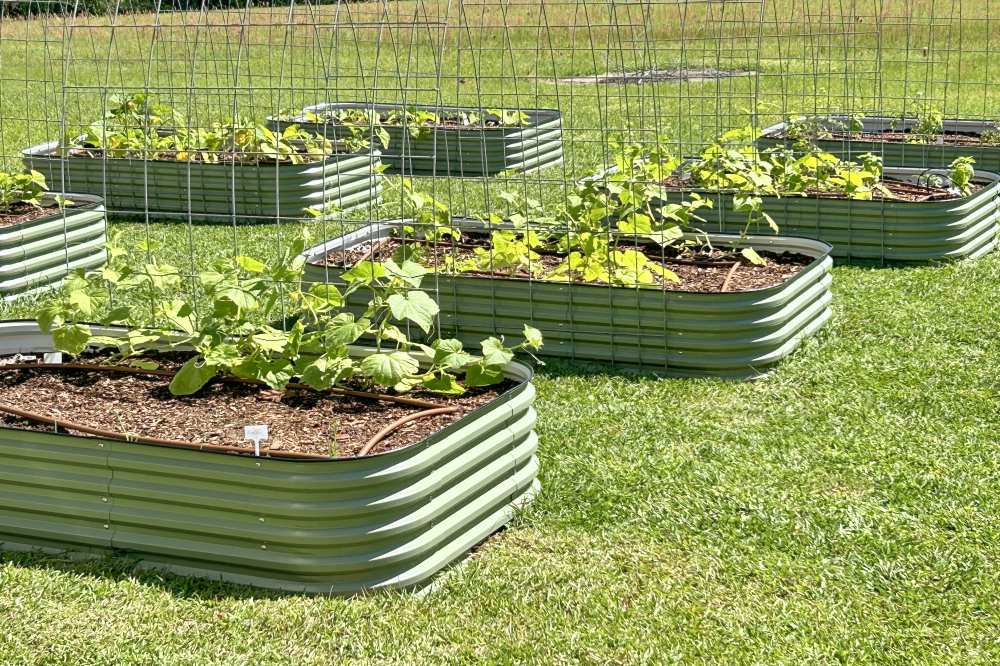
Why Start a Herb Garden
There are many benefits to growing an herb garden from the delicious flavors at your fingertips to the health benefits you get from fresh produce. Here are my top 5 reasons you should start an herb garden today.
- Fresh and Flavorful Herbs: Having fresh basil, rosemary, or thyme right outside your door is such a fun way to elevate your dishes. With an herb garden, you always have access to an array of flavors. You don’t have to rely on store bought herbs to be available.
- Cost-Effective: Growing your own herbs can save you a good amount of money in the long run. Starting herbs from seed is a very cost-effective option, but you can also find plants at your local nursery or farmers market at a reasonable price. These plants are the same price as buying a pack of herbs at the store.
- Enhanced Health Benefits: Being able to get the freshest possible herbs is a great way to boost their nutritional content. Herbs are packed with antioxidants, vitamins, and minerals. Incorporating fresh herbs into your diet can contribute to improved digestion, reduced inflammation, and enhanced immune function, among other advantages.
- Environmental Impact: By growing your own herbs, you reduce reliance on commercially grown herbs that often involve a lot of transportation and packaging. Additionally, if you choose to grow organically you can help preserve soil health and biodiversity.
- Enjoyable Hobby: Gardening, including tending to an herb garden, has been shown to have therapeutic benefits for mental health. It can be a very calming and meditative practice. I know I always feel better after spending some time in the garden.
What Tools and Supplies Do You Need
The main thing you will need to start your herb garden is a raised bed to grow your plants in. There are many different styles of raised beds you can go for. A few things to consider when choosing your raised bed are how much space you have, the height you are looking for, and your price point.
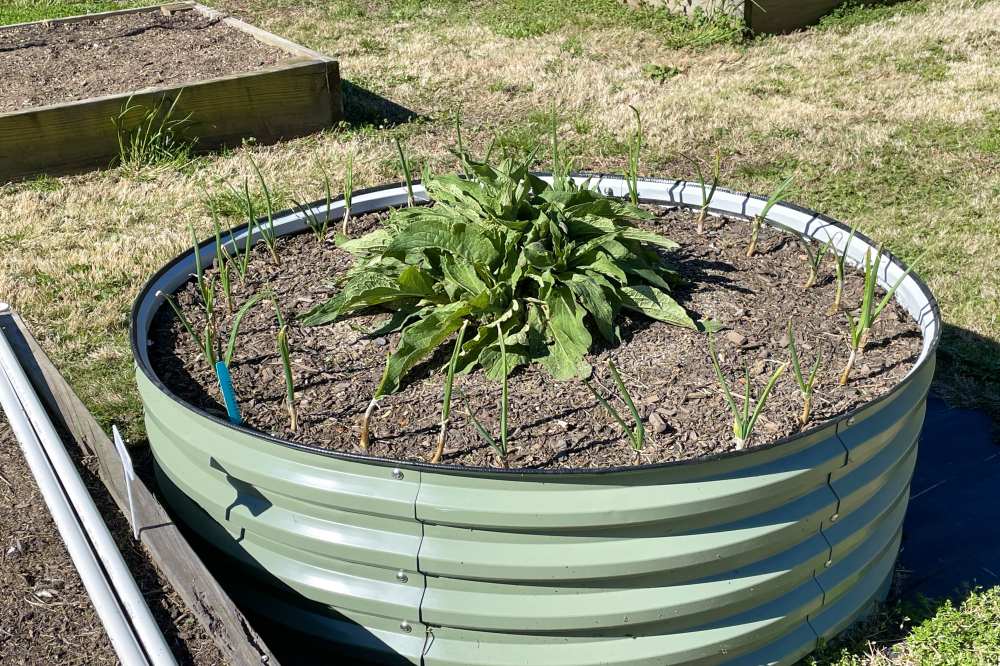
If you are starting small, try out a 42” round bed. This is great for tucking into corners of your garden. If you are looking for something a little large you can fit quite a few herbs in, go for something a little longer like this 6.5’ bed.
Beyond the raised bed you will need a good raised bed soil mix. This should be something with some compost and nutrients added to the soil. You will also want some pruners to be able to harvest and prune your plants and a trowel to be able to plant your herbs.
Lastly, you will need some type of water source to get your plants fresh water. This could be a hose, watering can, or even a drip irrigation system if you are feeling ambitious.
5 Best Herbs To Grow In Your Herb Garden
Now that you have your raised bed and tools, you are ready to plant! When deciding what herbs to plant in your raised bed first take a look at what herbs you enjoy eating the most. That will help give you an idea of what to focus on.
If you are not sure where to start, here are 5 of the best herbs you can add to your garden that should give you great yield and great flavors all summer long.
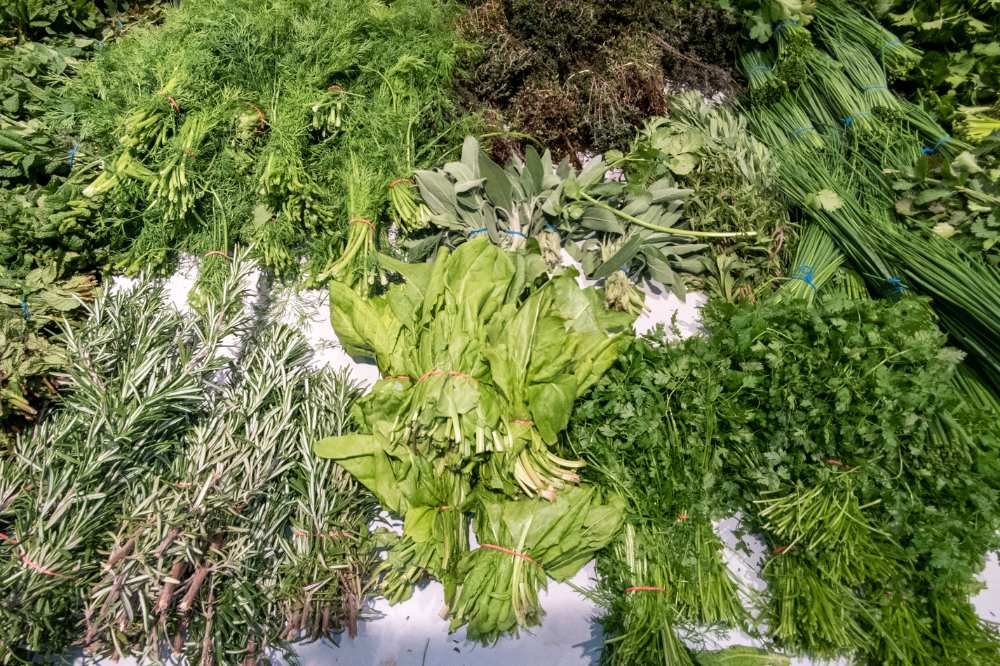
Basil
A staple in my kitchen, basil has a sweet and slightly peppery flavor that goes in so many dishes. There are many different types of basil you can grow from Italian basil to Thai basil, and even purple basil. It's commonly used to garnish dishes, toss in salads, or blend into pesto. Basil thrives in warm, sunny conditions and requires well-drained soil. Regular harvesting encourages bushier growth.
Rosemary
With its woody stems and aromatic leaves, rosemary adds depth to savory dishes, particularly meats, roasted vegetables, and bread. It prefers a sunny spot with well-drained soil and is drought-tolerant once established. Rosemary is a great option if you are in a very hot climate or you are looking for something that requires little maintenance. Rosemary is a fairly slow-growing plant so I would suggest starting from a plant vs. seed.
Parsley
This versatile herb comes in two main varieties: curly-leaf and flat-leaf (Italian) parsley. Both varieties are used in salads, soups, sauces, and garnishes. Parsley is happy in the sun but also does well with a little partial shade. It is a great one to tuck into the back of a raised bed or a corner that might get a little afternoon shade.
Thyme
With its earthy and slightly floral flavor, thyme is a versatile herb that pairs well with a variety of dishes, including poultry, fish, vegetables, and soups. It prefers full sun and well-drained soil. Thyme is a perennial herb that can be harvested throughout the growing season.
Cilantro (Coriander)
Cilantro has a bright almost citrusy flavor that is commonly used in Mexican, Indian, and Southeast Asian cuisines. Both its leaves (cilantro) and seeds (coriander) are edible and have distinct flavors. Not everyone loves cilantro so only grow this one if it’s something you and your family will use. Cilantro prefers cooler temperatures and partial shade in hot climates. Cilantro actually grows well from seed. I like to plant cilantro in the spring and when the temperature gets too hot you can pull it and replace it with a more summer-loving herb like basil.
These are some of the easiest and most common to grow but definitely not the only ones. You could also add herbs like sage, oregano, tarragon, or dill to the beds as well.
What to Avoid Planting in a Raised Bed Herb Garden
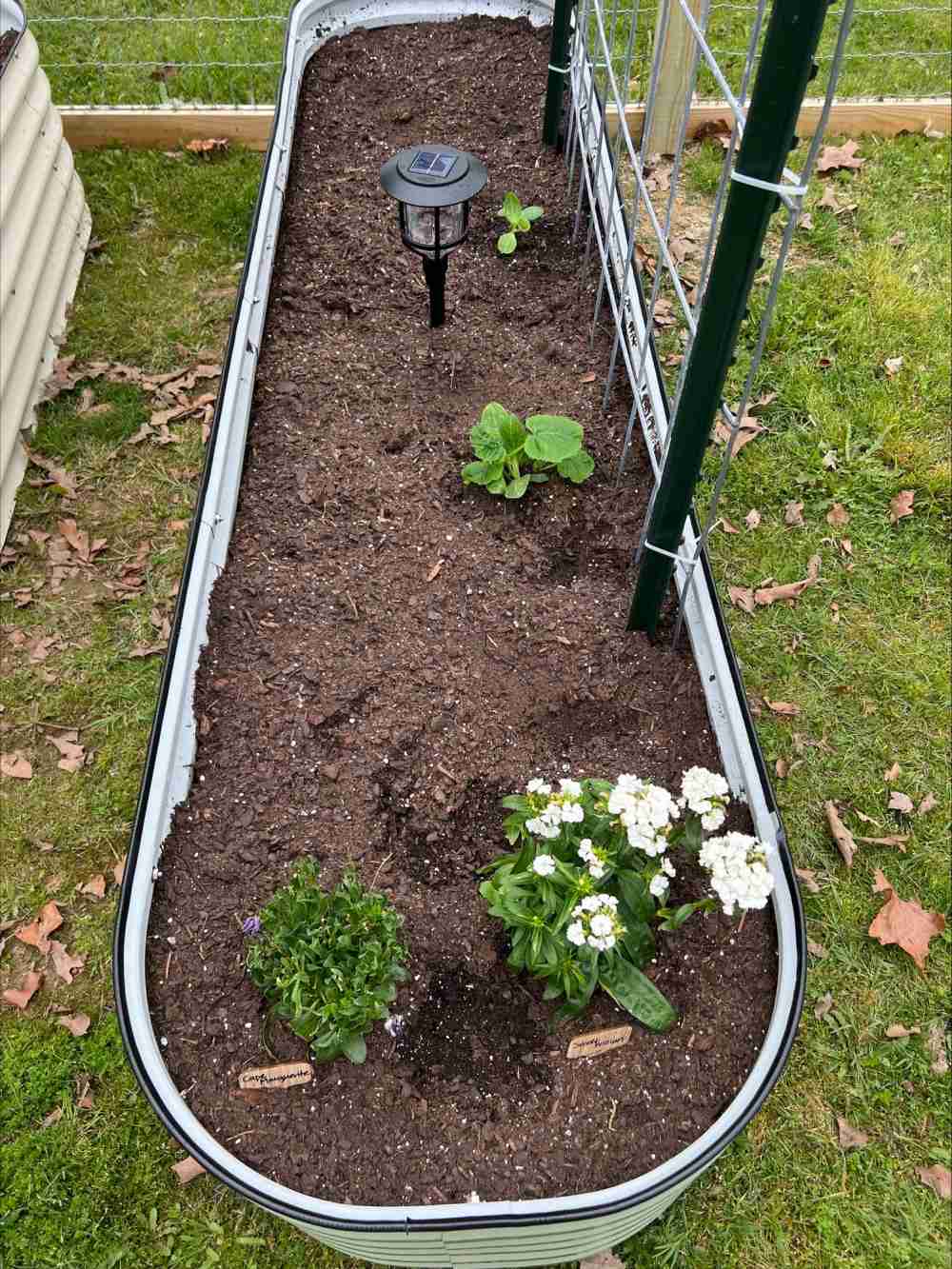
There are a few herbs I would avoid adding to a raised bed herb garden. They are wonderful plants but they are best when planted on their own. These herbs are mint and chives. Both mint and chives tend to spread very rapidly.
It is best to plant these herbs in their own containers and not mixed with other herbs. They will tend to take over their containers and might even overgrow the other herbs you have planted next to them.
Tips for Growing the Best Herbs
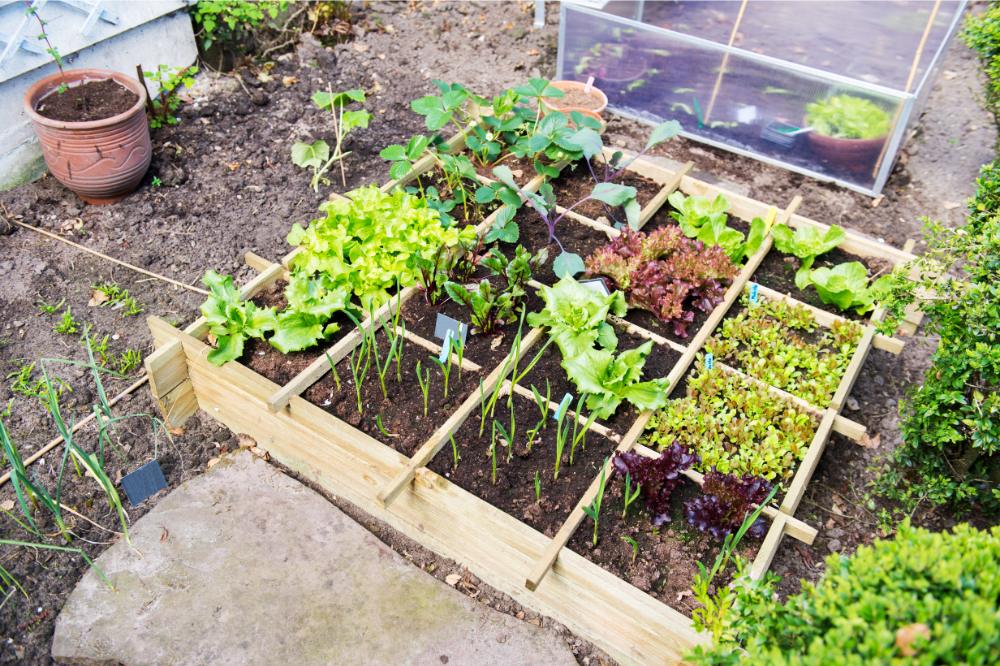
Find the Best Location
Most herbs thrive in full sun, so select a sunny spot in your garden for the best growing conditions. Make sure that the area has well-drained soil to prevent water logging, which can lead to root rot.
Also, consider where it is in relation to your kitchen. If you can have something close by your back door or near the house this will encourage you to easily grab herbs more often throughout the day. But do you know that can you grow herbs inside without direct sunlight?
Have Quality Soil Health
Herbs grow best in fertile, well-draining soil. Before plants, amend your soil with organic matter such as compost or aged manure to improve its texture and nutrients.
Herbs generally don't require heavy fertilization. I like to add in a little bit at the start of the growing season but you don’t need to consistently add fertilizer. A good raised bed mix with some compost is all they should need.
Water Regularly
Herbs need regular watering, but different herbs have different requirements. For your softer herbs like basil and parsley, make sure they are getting consistent moisture. For your hard herbs like rosemary and thyme, they can go a little longer without watering. To make it easier, try planting the herbs that need regular watering next to each other and the herbs that are more drought-tolerant on the other end. This way you are watering the best for the needs of the plants.
When watering, water deeply but infrequently to encourage deep root growth. Avoid overwatering, as this can lead to root rot and other issues.
Best Ways to Use Your Herbs
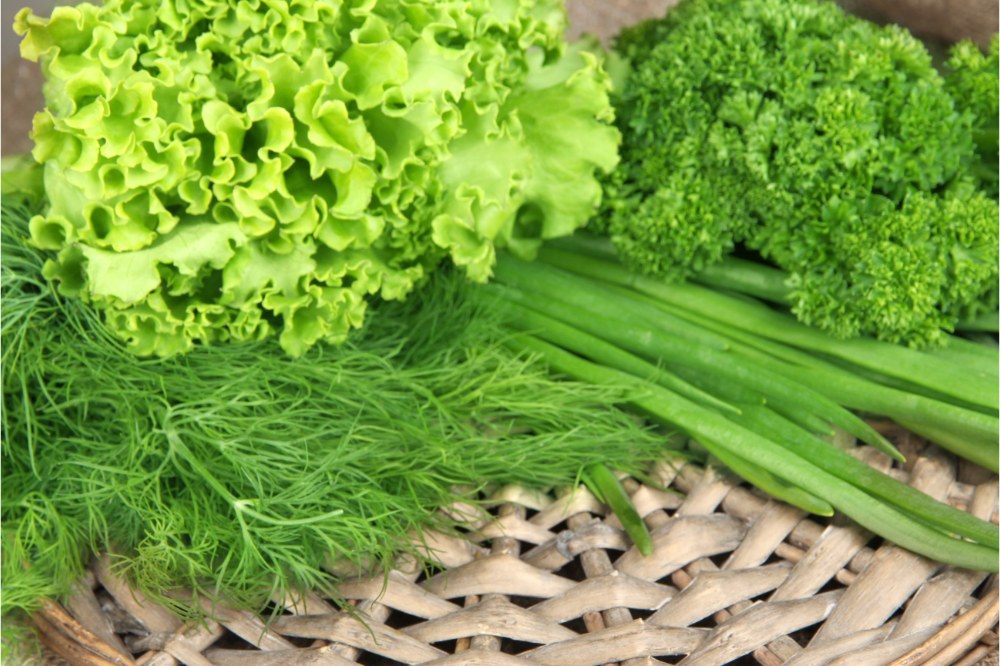
The beauty of growing herbs is their versatility. You can add herbs to almost any dish to enhance and brighten the flavor. A few of my favorite ways to use hard herbs (rosemary and thyme) are in soups or stews. You can also add these to your roasted vegetables to get delicious rosemary potatoes.
For your softer herbs (basil, parsley, and cilantro) you can add these to the top of many dishes for a pop of freshness. Add a handful of basil to top your favorite pasta dish like this
Get Growing!
No matter what herbs you decide to grow in your raised beds this year, I hope this gives you an idea of how to get started. Once you learn to joy of growing herbs in your home garden you will be looking forward to planting them year after year.

By Kelsey Patterson
Author bio: Kelsey is the creator of Sigsbee Street, a food and gardening blog. She has a love of growing and cooking food from scratch. Finding new ways to incorporate home grown fruits, vegetables, and herbs into her garden keeps her excited for the growing season every year. She hopes to inspire other home gardeners to grow their own food and find ways to use their harvest in the kitchen.


